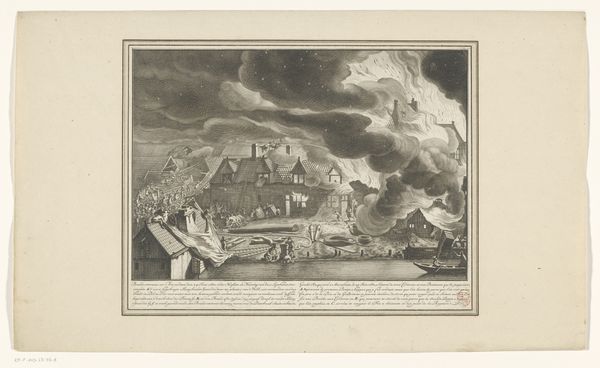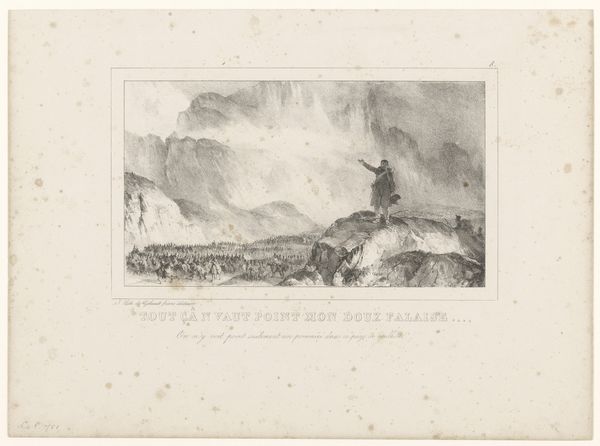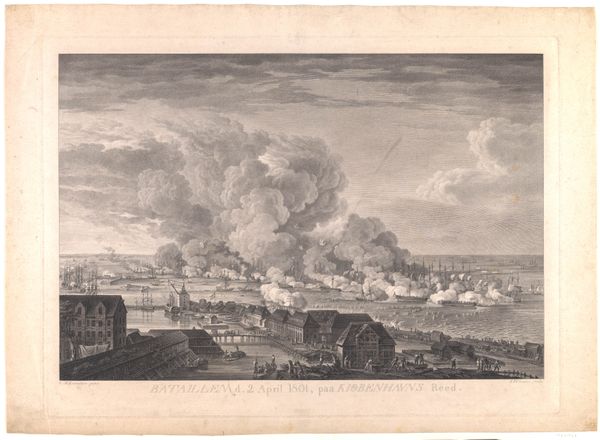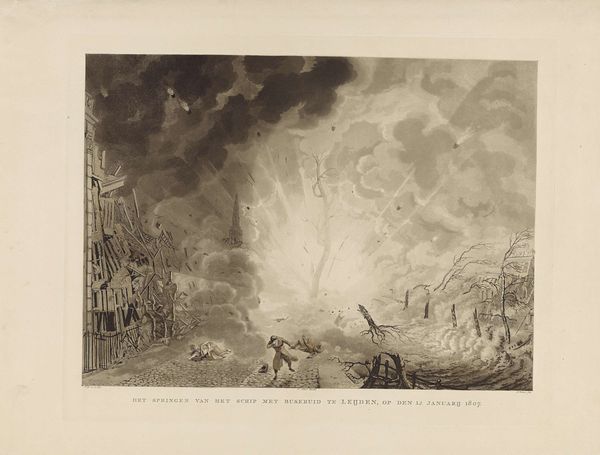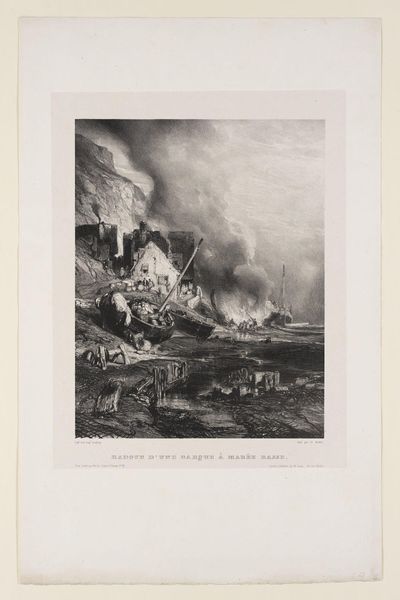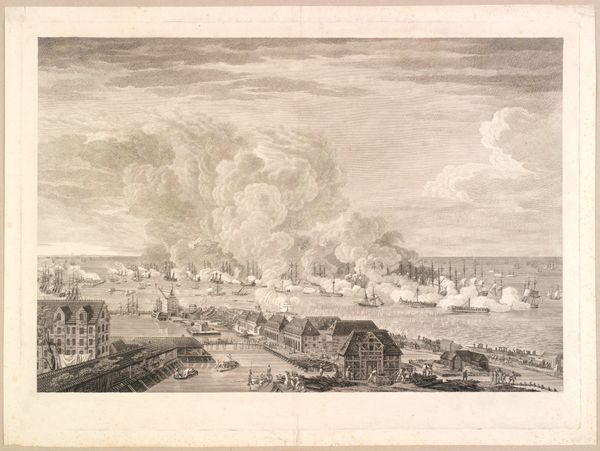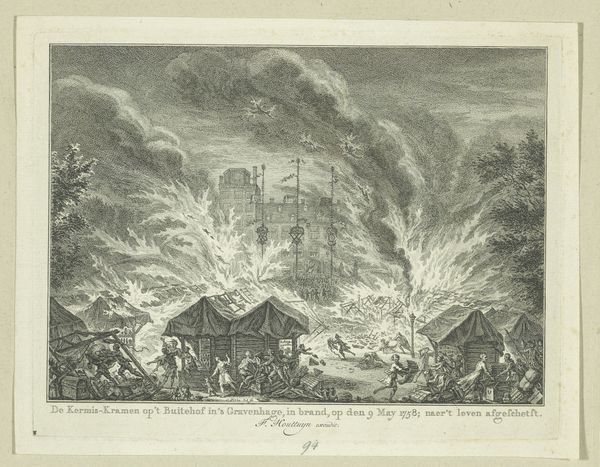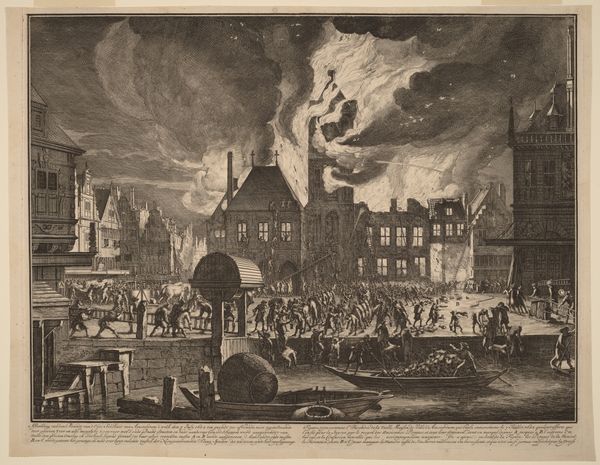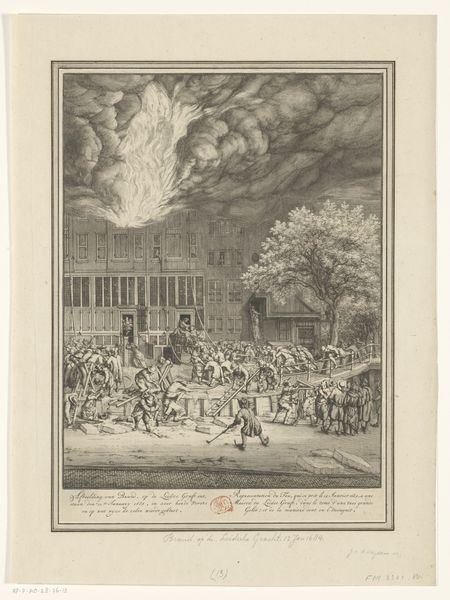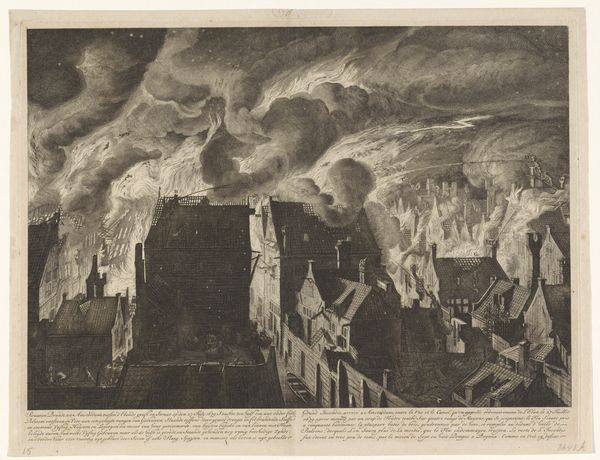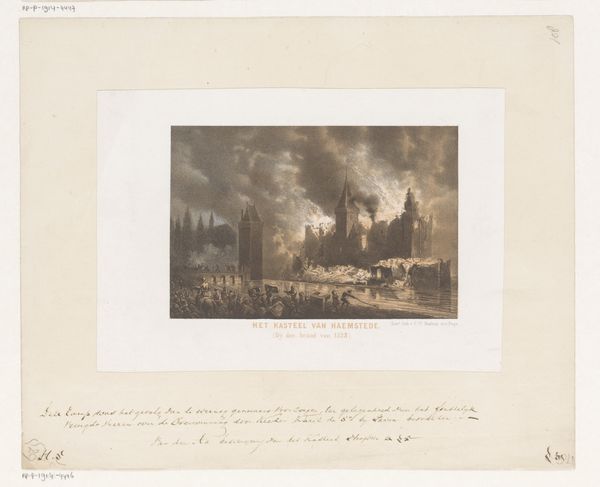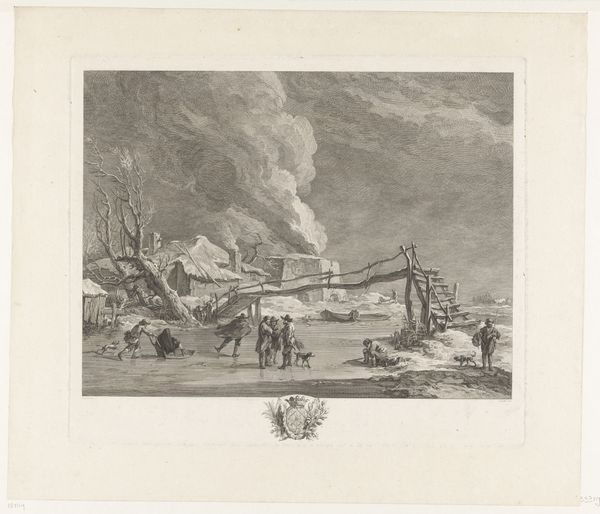
Birth of the Dauphin: The Crowd Watching the Fireworks on the Place de la Grève, Paris, January 21, 1782 1782 - 1860
0:00
0:00
drawing, print, paper
#
drawing
#
neoclacissism
# print
#
paper
#
cityscape
#
history-painting
Copyright: Public Domain
Curator: It's fascinating to consider "Birth of the Dauphin: The Crowd Watching the Fireworks on the Place de la Grève, Paris, January 21, 1782," a drawing and print by Jean Michel Moreau the Younger, spanning 1782-1860, housed at the Met. What draws your attention? Editor: Well, firstly, the sheer number of people. It’s like a buzzing hive, all focused on these enormous, extravagant fireworks. How did Moreau create this image? It feels like a moment frozen in time, almost like a photograph, yet also heavily stylized. What do you see in the making of this print that adds to its meaning? Curator: Absolutely. Look closely at the details, consider the paper itself, the engraving process, and its wide distribution via printmaking. The act of creating this artwork wasn’t just about documenting the fireworks. Think about the consumption of images like this – how did these prints function as propaganda, circulating the spectacle of royal power, reinforcing class structures and societal values in pre-Revolutionary France? Editor: So, it's less about the Dauphin and more about reinforcing social norms through mass-produced imagery? Curator: Precisely. The artist's labor, the materials employed, and the accessibility of prints highlight a system that used spectacle as a form of control. Notice how the architecture acts as a backdrop. What could this imply? Editor: Maybe architecture in this setting symbolizes a permanence of rule versus the impermanence of fireworks? Like "We built this, it is yours forever, rejoice"? It’s definitely got me thinking about how art is manufactured, and what that manufacture tells us about a specific society. Curator: Exactly! It’s about understanding the social function of art as a commodity and a cultural artifact deeply intertwined with power structures. These fireworks are literally an explosion of wealth and authority. Editor: Wow, I never would have considered that beyond its face value. This perspective makes me rethink the purpose of a "historical" cityscape like this. Thanks. Curator: Likewise. This print makes it obvious: the *how* and *why* of creating the artwork is just as significant as *what* is represented.
Comments
No comments
Be the first to comment and join the conversation on the ultimate creative platform.
